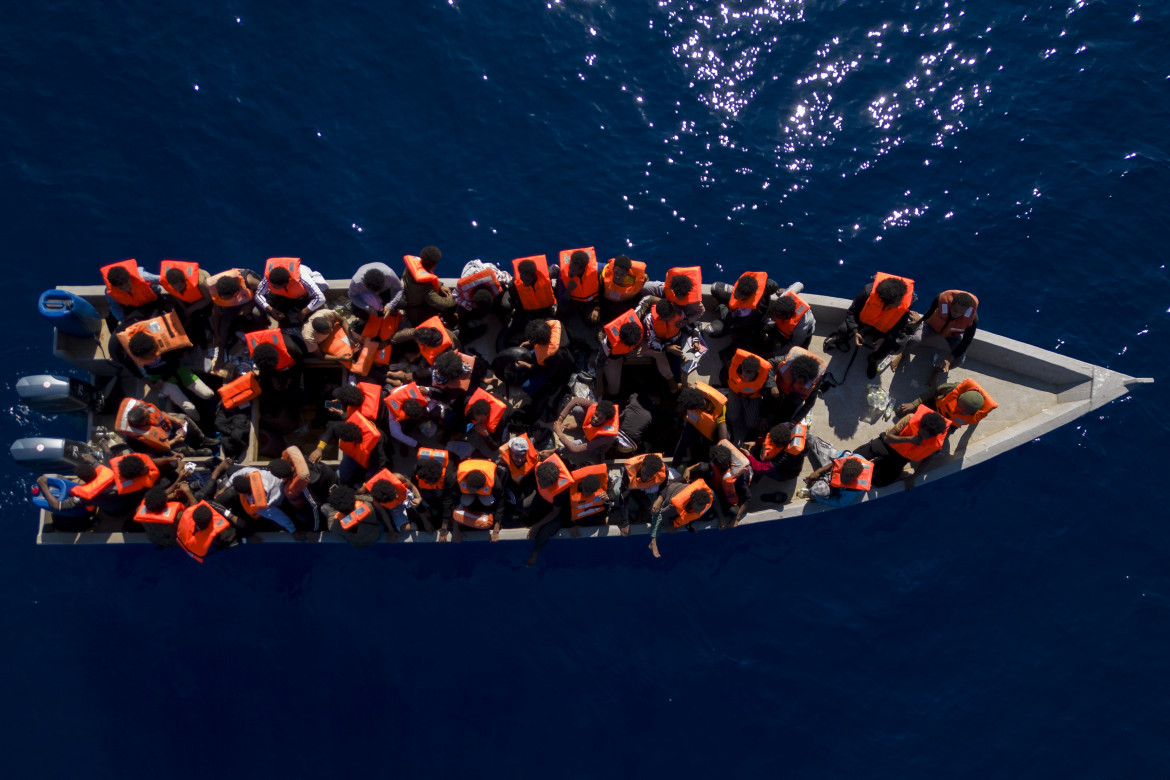Analysis
Violence continues in Tunisia and 600 people abandoned in the desert
At least 600 Sub-Saharan migrants were still abandoned in the desert as of Monday. Meanwhile the Italian government is partnering with the Tunis authorities to stop migration.

As of Monday, there were 600 people still stuck in the militarized zone on the border with Libya, a strip of desert without water and food and effectively inaccessible.
“There are people dying, children and pregnant women. We need help,” can be heard in one of the recordings received by Mem.Med – Memoria Mediterranea project, whose authenticity il manifesto was able to verify. There are two other videos showing Tunisian security forces clearing out people stranded in the no-man’s-land at the border with tear gas, and a number of photos, including one person holding a baby less than a year old.
Since the beginning of July, local Tunisian authorities have deported at least 1,200 people along the Libyan-Algerian border. To date, 15 of them are confirmed dead, but according to the latest estimates, that number could rise significantly in the coming weeks. They are mainly being deported from Sfax, more than 300 kilometers away, a city with a strong presence of the sub-Saharan community.
Here, violence of all kinds against people from West Africa and Sudan has been reported for more than two weeks. Meanwhile, their stories are all blurred together and the number of those who have lost everything and find themselves living on the streets or in the fields is increasing.
Nevertheless, on Sunday, July 15, European Union Commissioner Ursula von der Leyen, accompanied by Prime Minister Giorgia Meloni and Dutch Prime Minister Mark Rutte (who has resigned from office), signed a so-called “strategic and comprehensive partnership” with the Tunisian authorities, something that had been eagerly awaited on the northern shore of the Mediterranean for more than a month.
In a ceremony closed to journalists from both foreign and Tunisian media, there was no mention of the plight of sub-Saharan and Sudanese people who have been victims of violence in Sfax and abandoned in the desert.
The only reference to them came from President Saied: “The Tunisian people have shown unlimited generosity towards these migrants expelled from their countries, while many NGOs that should take up their humanitarian role have acted only through press releases. Are they actually able to save these victims from hunger and thirst? Not to mention the campaigns of defamation and fake news with the aim of harming Tunisia and its people.”
These words pointedly obscure who is responsible for these desert deportations, namely the Tunisian state. Furthermore, the Interior Ministry of Libya’s national unity government, a country notoriously ruled by militias and where abuses in detention centers occur on a daily basis, released a video documenting the rescue of a number of people from the Tunisian border.
The EU-Tunisia memorandum, based on five pillars, obviously has managing migration flows as its most urgent priority, and has only one main goal at this point: to achieve a drop in the numbers of arrivals along the northern shore of the Mediterranean. The rest of the investments can wait for later, including the renewable energy part. This is a detail that has not gone unnoticed by Tunisian civil society, which has been busy for the past few months organizing protests with the message that Tunisia cannot be considered a safe country for the repatriation of both its citizens and other migrants.
“Tunisia signed a memorandum in an undemocratic context, characterized by the absence of debate and censorship of information. This allows our country to play the role of guard, to become a fortress to contain those who are unwanted by European immigration policies,” said the spokesperson for the Tunisian Forum for Economic and Social Rights (FTDES), summarizing the concerns of civil society, which is feeling increasingly hemmed in by the moves of the president.
One of the violent forms in which the deterioration of the internal situation in the country is manifested is the lack of access to the areas where violence is most prevalent. In Sfax, thousands of people continue to go into the streets and commit violent acts, especially in Bab Jebli, in the city center.
“I was simply walking down the street when a group of Tunisians attacked me from behind. Look at the wounds,” said a Sudanese asylum seeker in his early 20s a few days ago, who fled the civil war that broke out in his country. “They hit me on the head and broke my lip. A UNHCR worker took me to the hospital but then left me there. Now I have to find my friends again.”
Thousands of people are known to have taken refuge in the countryside outside Sfax to escape police attacks, and the impression we’re left with is that the stories of people who have been victims of violence are being erased, replaced by cold numbers. To date, the number of people marooned in the desert since the beginning of July is more than 1,200; only 600 have managed to return.
Originally published at https://ilmanifesto.it/tunisia-le-violenze-non-finiscono-protestano-le-ong on 2023-07-18
